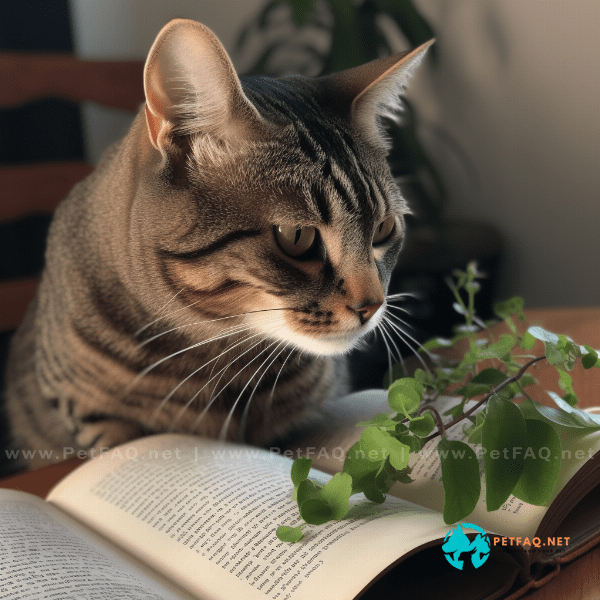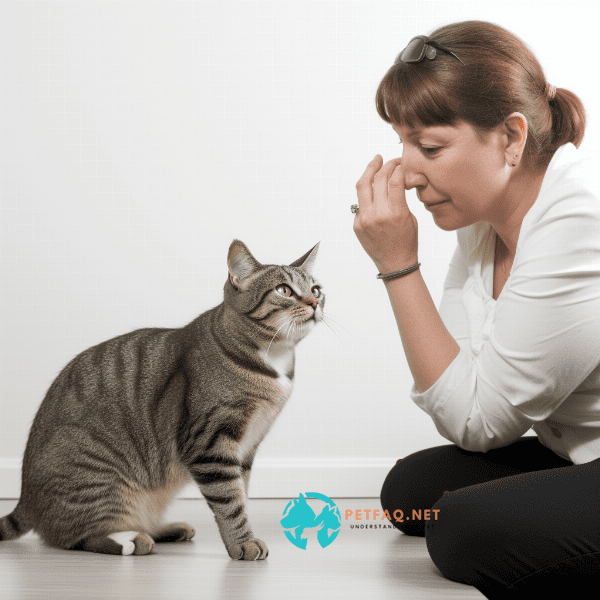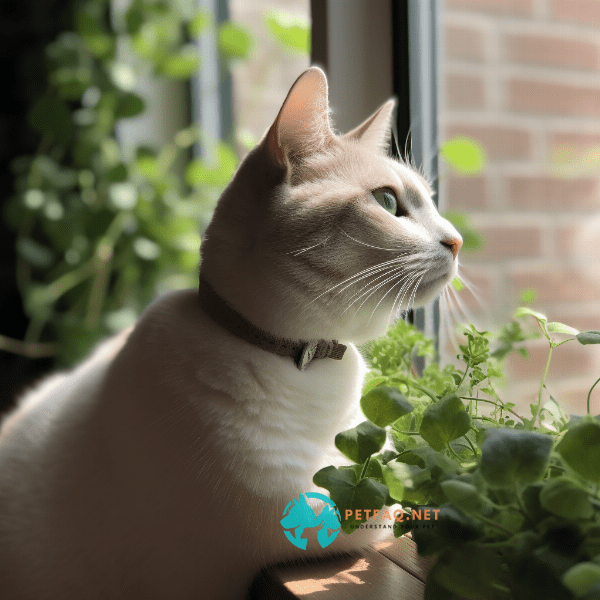Table of Contents
- What is Catnip and Why Do Cats Love It?
- The Benefits of Cat Scratching Behavior for Cats
- The Different Types of Cat Scratching Behavior
- The Link Between Catnip and Scratching Behavior in Cats
- How to Encourage Healthy Scratching Behavior in Cats
- Alternatives to Catnip for Entertaining Your Feline Friend
- Common Misconceptions about Catnip and Scratching Behavior.
What is Catnip and Why Do Cats Love It?
What is Catnip and Why Do Cats Love It?
Catnip, also known as Nepeta cataria, is a herb from the mint family that is native to Europe and Asia. It contains a chemical called nepetalactone, which is what makes cats go crazy for it. When cats smell or ingest catnip, the nepetalactone binds to their olfactory receptors, which triggers a series of chemical reactions in their brain.
The effects of catnip on cats can vary. Some cats become more active, while others become more relaxed. Some cats become hyper-focused on the catnip and may start rolling around or rubbing their faces on it. Others may become more vocal and start meowing or purring.
It’s not entirely clear why cats love catnip so much, but some experts believe that it may have to do with the herb’s similarity to pheromones. Pheromones are chemicals that animals use to communicate with one another. It’s possible that cats are drawn to catnip because it contains a chemical that is similar to the pheromones that cats produce.
It’s worth noting that not all cats are affected by catnip. In fact, only about 50-70% of cats are sensitive to it. Kittens are also less likely to be affected by catnip than adult cats.
If you’re not sure whether your cat is sensitive to catnip, you can try giving them a small amount and see how they react. You can find catnip in a variety of forms, including dried leaves, sprays, and toys. Just be aware that some cats can become addicted to catnip, so it’s best to limit their exposure to it to a few times a week.
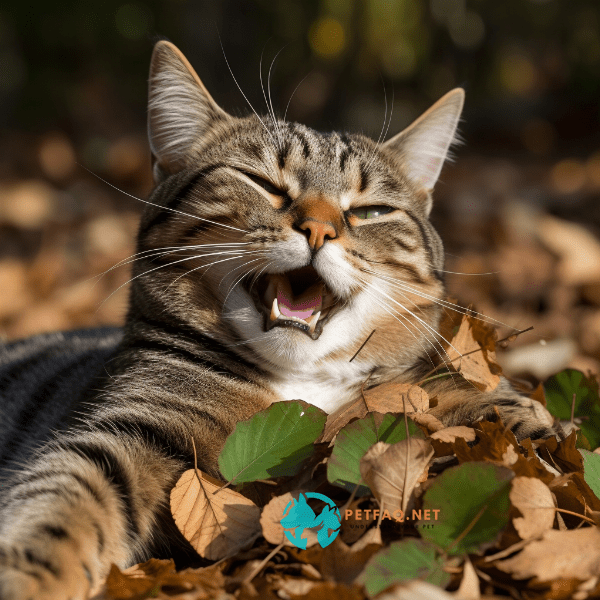
The Benefits of Cat Scratching Behavior for Cats
Cats are natural scratchers, and while it may seem like destructive behavior, scratching is actually important for their physical and mental health.
First and foremost, scratching helps cats to shed the outer layer of their claws, which helps to keep them sharp and healthy. Scratching also helps cats to stretch their muscles and maintain their flexibility. When cats stretch, they’re able to release tension and improve their circulation.
Scratching also helps cats to mark their territory. Cats have scent glands in their paws, and when they scratch, they leave behind a scent that lets other cats know that this is their territory. This is important for cats, as it helps them to feel secure and in control of their environment.
Finally, scratching is a natural form of stress relief for cats. When cats scratch, they release endorphins, which help to reduce their stress levels. This is especially important for indoor cats, who may not have as many opportunities to engage in natural behaviors like hunting and exploring.
As a cat owner, it’s important to provide your cat with appropriate scratching surfaces, such as scratching posts or pads. This will help to prevent your cat from scratching your furniture or carpets. It’s also a good idea to place scratching surfaces in areas where your cat spends a lot of time, such as near their favorite napping spot or next to a window with a good view.
By providing your cat with appropriate scratching surfaces, you can help to ensure that they’re able to engage in this important behavior in a way that is safe and beneficial for both them and your home.
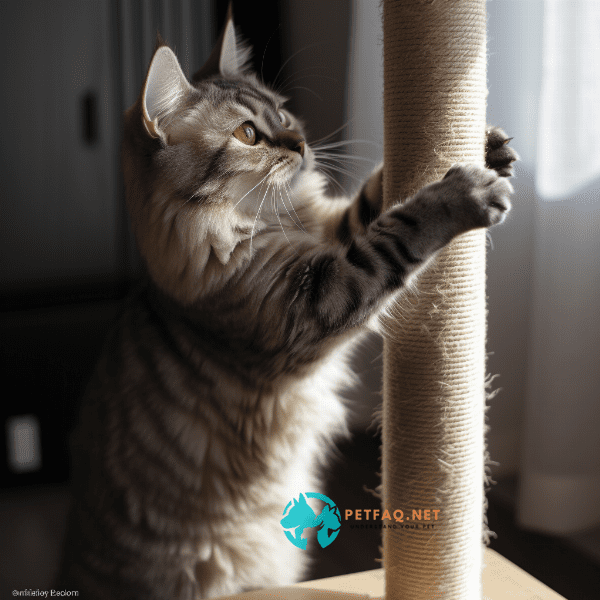
The Different Types of Cat Scratching Behavior
The Different Types of Cat Scratching Behavior
Cats have different scratching preferences, and as a cat owner, it’s important to understand these preferences to provide your cat with the right type of scratching surface.
Vertical scratching is when a cat scratches on a vertical surface, such as a wall or a scratching post. Cats prefer vertical surfaces because they allow them to fully stretch their bodies and scratch at different heights. Providing a tall scratching post with different textures can satisfy your cat’s need for vertical scratching.
Horizontal Scratching:
Horizontal scratching is when a cat scratches on a flat surface, such as the floor or a horizontal scratching pad. This type of scratching is particularly popular among cats that like to scratch in a lying-down position or those that prefer to scratch the carpet. Providing a flat scratching pad with a rough texture can satisfy your cat’s need for horizontal scratching.
Angled Scratching:
Angled scratching is when a cat scratches on a surface that is at an angle, such as a cardboard scratcher or an angled scratching post. This type of scratching can be particularly beneficial for cats that have arthritis or other mobility issues, as it allows them to stretch and scratch comfortably.
It’s important to note that cats have individual scratching preferences, so it’s a good idea to provide a variety of scratching surfaces to cater to their needs. You can also observe your cat’s scratching behavior to determine their preferences and adjust their scratching surfaces accordingly.
In addition to providing appropriate scratching surfaces, it’s also important to discourage your cat from scratching on inappropriate surfaces, such as furniture or walls. You can do this by using deterrents, such as double-sided tape or citrus sprays, and providing positive reinforcement when your cat uses their scratching surfaces. With patience and consistency, you can train your cat to use their scratching surfaces and keep your home scratch-free.
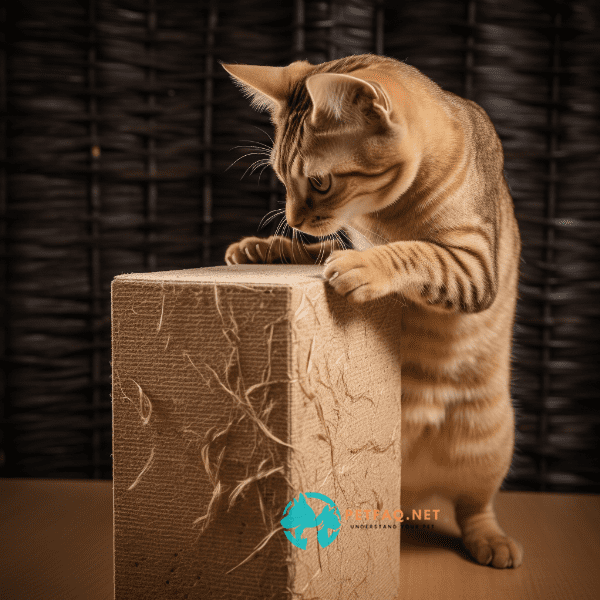
The Link Between Catnip and Scratching Behavior in Cats
The Link Between Catnip and Scratching Behavior in Cats
Catnip is a plant that contains a chemical called nepetalactone, which is known to have a stimulating effect on cats. When cats come into contact with catnip, they may exhibit a range of behaviors, including rolling, rubbing, and licking. They may also become more active and playful.
One of the behaviors that can be triggered by catnip is scratching. When cats are exposed to catnip, they may become more interested in their scratching surfaces and spend more time scratching. This is because catnip stimulates a cat’s senses, including their sense of smell, and makes them more aware of their surroundings.
Additionally, scratching can also be a way for cats to mark their territory when they are under the influence of catnip. Cats have scent glands in their paws, and when they scratch, they leave behind their scent. This scent serves as a signal to other cats that this area is occupied and helps the cat feel more secure in their environment.
However, it’s important to note that not all cats are affected by catnip, and not all cats that are affected by catnip will exhibit scratching behavior. Additionally, some cats may prefer to scratch after the effects of catnip have worn off.
In conclusion, while there is a link between catnip and scratching behavior in cats, it’s important to provide your cat with appropriate scratching surfaces regardless of whether they are affected by catnip or not. By understanding your cat’s scratching preferences and providing them with the right type of scratching surfaces, you can help to promote their physical and mental health and prevent unwanted scratching behavior in your home.
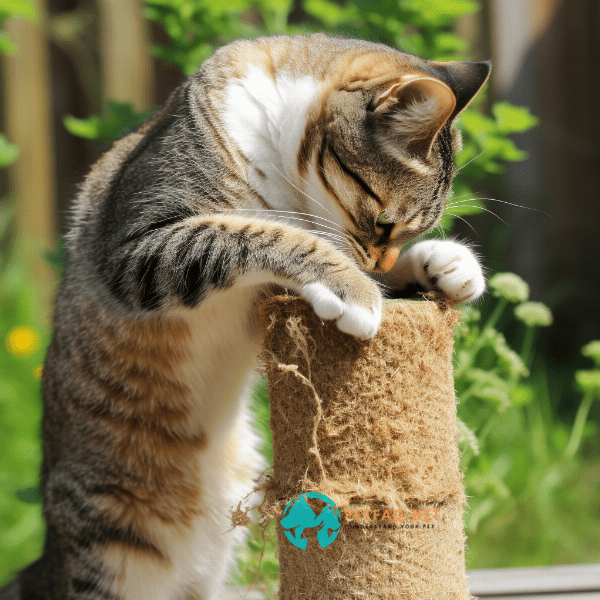
How to Encourage Healthy Scratching Behavior in Cats
How to Encourage Healthy Scratching Behavior in Cats
Cats need to scratch to maintain the health of their claws, stretch their muscles, and mark their territory. However, it can be challenging to encourage healthy scratching behavior in cats, especially if they prefer to scratch on inappropriate surfaces such as furniture or walls. Here are some tips to help you encourage healthy scratching behavior in your cat:
1. Provide appropriate scratching surfaces: As we’ve discussed earlier, cats have different scratching preferences, and it’s important to provide a variety of scratching surfaces to cater to their needs. Provide both vertical and horizontal scratching surfaces, as well as angled scratching surfaces if necessary. Ensure the surfaces are sturdy and stable, and have a rough texture that mimics the texture of tree bark or sisal rope.
2. Place scratching surfaces strategically: Place scratching surfaces in areas where your cat spends the most time, such as near their bed or near a window. You can also place them in areas where your cat likes to scratch on inappropriate surfaces, such as furniture or walls.
3. Encourage your cat to use the scratching surfaces: To encourage your cat to use their scratching surfaces, you can place treats or catnip on or near the surfaces. You can also play with your cat near the scratching surfaces to make them more appealing.
4. Discourage inappropriate scratching behavior: If you catch your cat scratching on inappropriate surfaces, gently redirect them to their scratching surface. You can also discourage inappropriate scratching behavior by using deterrents such as double-sided tape or citrus sprays.
5. Reward good behavior: When your cat uses their scratching surfaces appropriately, reward them with treats, praise, or playtime. Positive reinforcement can help to reinforce good behavior and encourage your cat to continue using their scratching surfaces.
In conclusion, encouraging healthy scratching behavior in cats requires patience, consistency, and understanding your cat’s preferences. By providing appropriate scratching surfaces, strategically placing them, encouraging your cat to use them, discouraging inappropriate scratching behavior, and rewarding good behavior, you can help your cat maintain healthy claws, stretch their muscles, and mark their territory in a way that is safe and appropriate for your home.
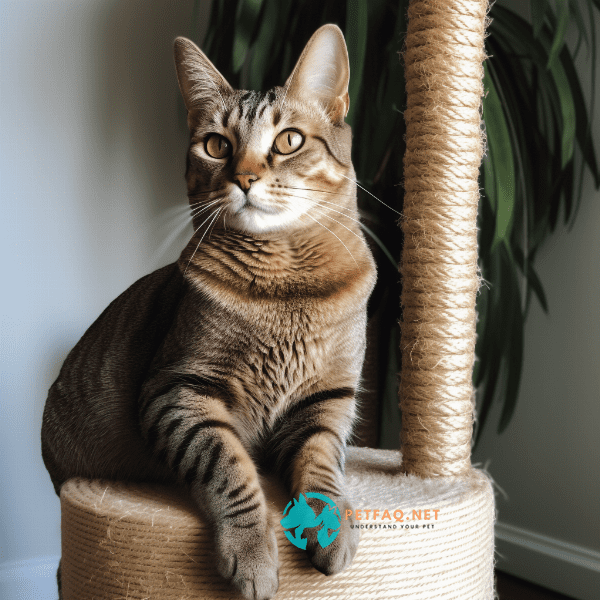
Alternatives to Catnip for Entertaining Your Feline Friend
Alternatives to Catnip for Entertaining Your Feline Friend
While catnip can be a great way to entertain your feline friend, not all cats are affected by it. Additionally, some cats may become overstimulated by catnip and exhibit unwanted behavior. Here are some alternatives to catnip that can help entertain your cat:
1. Silver Vine: Silver vine is a plant that is native to Asia and contains actinidine, a chemical that is similar to nepetalactone found in catnip. Silver vine can be purchased in different forms such as dried or powdered and can be used to stimulate your cat’s senses.
2. Valerian Root: Valerian root is a plant that contains valerenic acid, which is known to have a calming effect on cats. You can purchase valerian root in the form of a spray, and spray it on your cat’s toys or scratching surfaces to encourage them to use them.
3. Honeysuckle: Honeysuckle is a woody plant that contains nepetalactone and other chemicals that are similar to those found in catnip. You can purchase honeysuckle wood or oil and use it to stimulate your cat’s senses.
4. Interactive toys: Interactive toys such as puzzle feeders or wand toys can provide mental stimulation and physical exercise for your cat. These toys can help to keep your cat entertained and prevent unwanted behavior such as scratching or chewing.
5. Scratching posts with toys attached: Some scratching posts come with toys attached to them, which can encourage your cat to use them. These toys can also provide additional entertainment for your cat.
In conclusion, while catnip can be a great way to entertain your feline friend, it’s not the only option. Silver vine, valerian root, honeysuckle, interactive toys, and scratching posts with toys attached are all alternatives that can help to stimulate your cat’s senses and prevent unwanted behavior. By providing a variety of entertainment options for your cat, you can help to keep them happy, healthy, and engaged.

Common Misconceptions about Catnip and Scratching Behavior.
Common Misconceptions about Catnip and Scratching Behavior
Catnip and scratching behavior are both common behaviors exhibited by cats, and there are many misconceptions surrounding these topics. Here are some common misconceptions about catnip and scratching behavior in cats:
1. All cats love catnip: While many cats do enjoy the effects of catnip, not all cats are affected by it. The sensitivity to catnip is genetic, so some cats may not react to it at all.
2. Catnip is addictive: Catnip is not addictive, and it is safe for cats to consume. However, some cats may become overstimulated by catnip and exhibit unwanted behavior, such as aggression or destructive behavior.
3. Scratching behavior is a sign of aggression: Scratching behavior is a natural behavior for cats, and it is not necessarily a sign of aggression. Cats need to scratch to maintain the health of their claws, stretch their muscles, and mark their territory.
4. Scratching behavior can’t be controlled: While it can be challenging to control scratching behavior in cats, it is possible to redirect their behavior to appropriate surfaces. By providing appropriate scratching surfaces, strategically placing them, and encouraging your cat to use them, you can help to prevent unwanted scratching behavior.
5. Declawing is a safe and effective way to prevent scratching behavior: Declawing is a surgical procedure that removes the entire claw, including the bone, from a cat’s paw. This procedure is not only painful for cats but can also lead to long-term health issues and behavioral problems. It’s important to provide appropriate scratching surfaces and redirect your cat’s behavior to prevent unwanted scratching, rather than resorting to declawing.
In conclusion, there are many misconceptions surrounding catnip and scratching behavior in cats. It’s important to understand that not all cats react to catnip, scratching behavior is natural for cats, and it is possible to redirect unwanted scratching behavior to appropriate surfaces. By providing appropriate scratching surfaces and understanding your cat’s behavior, you can help to keep your feline friend happy, healthy, and engaged.
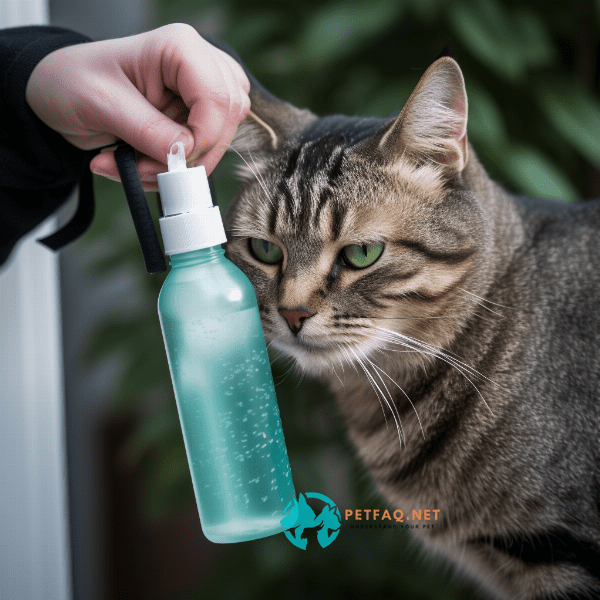
Frequently Asked Questions (FAQs) about Catnip and scratching behavior in cats:
1. What is catnip and how does it affect a cat's behavior?2. What types of scratching posts or toys are best for cats?
3. Can excessive use of catnip lead to negative behaviors in cats?
4. What are some of the benefits of using catnip to encourage scratching in cats?
5. Why do some cats love catnip while others seem to be unaffected by it?

